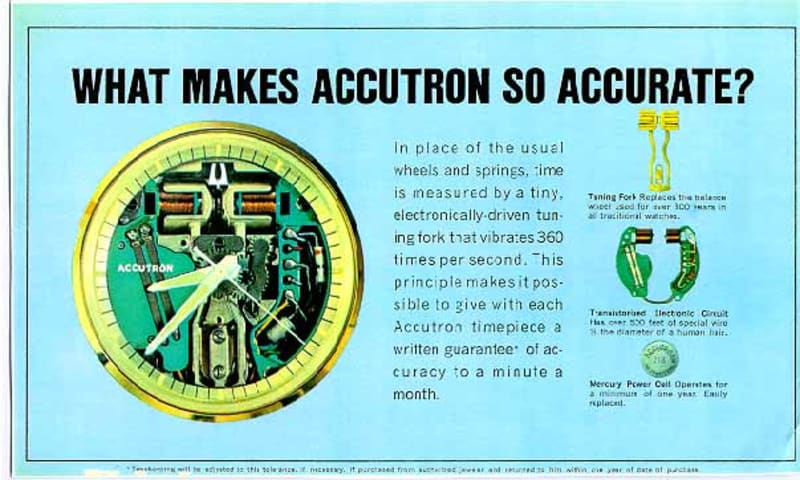Part One of our series 'Quartz in a Nutshell' starts with... the beginning, right. Although not explicitly a quartz watch but to our understanding the first electronic wristwatch and the watch that forced horology towards quartz -- because of its superior precision, technological progress and patent laws.
Sparking the Electronic Revolution: In late 1960 (November) Bulova introduced the cal214 to the market -- a tuning-fork movement developed by the Swiss engineer Max Hetzel, that changed horology completely and was the first step into electronic wrist-watches. A journey that reached perfection with the Omega 2.4MHz MegaQuartz & The Citizen in terms of accuracy and the Concord Delirium in terms of miniature size -- less than 20 years after the ignition sparked by Bulova cal214.
The accuracy of the 360Hz swinging tuning-fork in cal214 was unparalleled and not to reach by mechanical counterparts swinging at 5Hz or less. This accuracy combined with its low-maintenance and reliability made the revolutionary cal214 a long-term mega-seller: production stopped in 1969 and iterations like cal218 were produced until end of the 70s decade.
The Bulova cal214 -- the disruptive movement that sparked the electronic revolution in wristwatches. An agitation that is dividing the horological society since more than 60 years, now.
